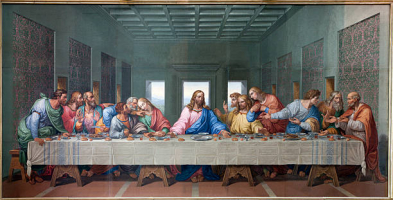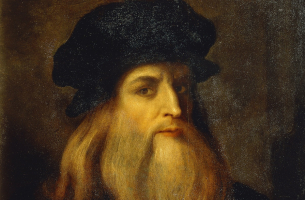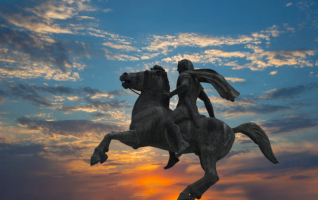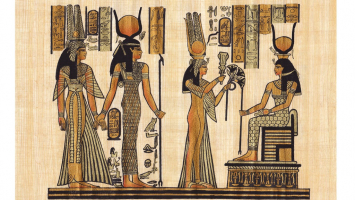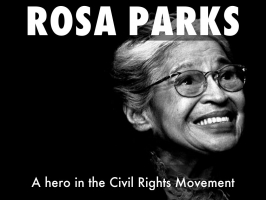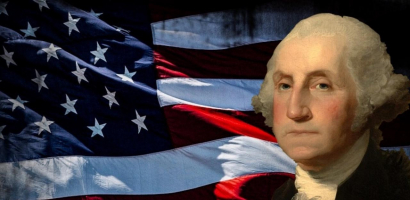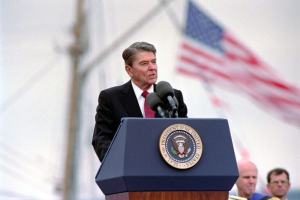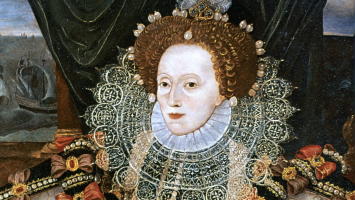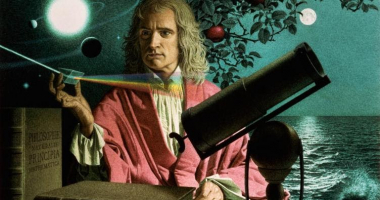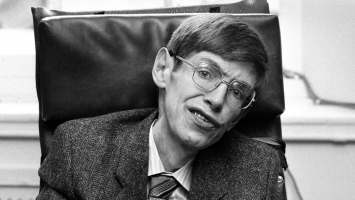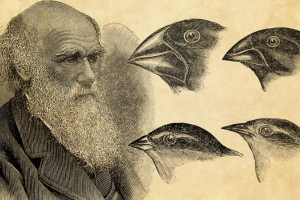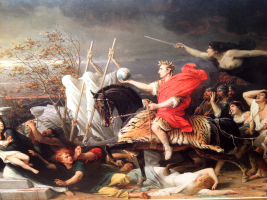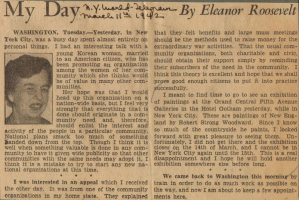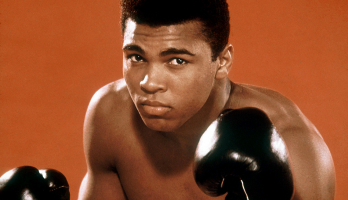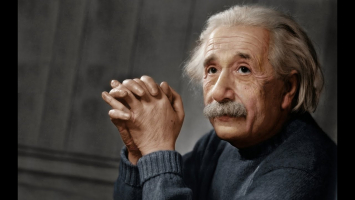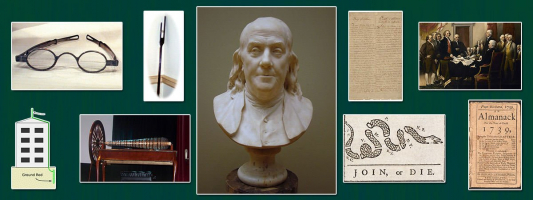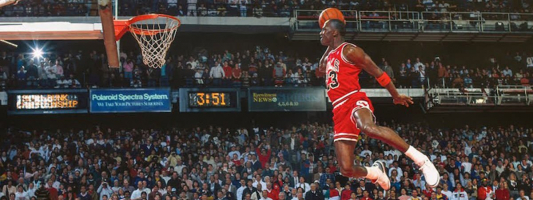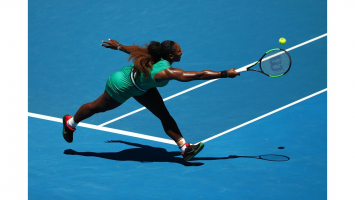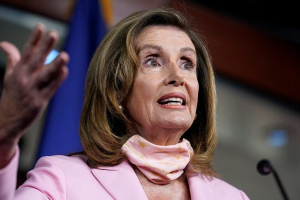Top 10 Major Accomplishments of Leonardo Da Vinci
Leonardo Da Vinci (1452–1519), the main figure of the Italian Renaissance, embodied the ideal polymath, or a person having skill in a wide range of fields, ... read more...more than anybody else in history. In science, he is credited with several inventions and discoveries, as well as the design of many things that were far ahead of their time; in art, he is regarded as one of the greatest painters of all time, having created the most famous painting of all time; and in anatomy, he conducted the most detailed study of the human body prior to the twentieth century. Da Vinci was also interested in architecture, botany, geology, music, and literature. When they cover all of his achievements in a single article would be impossible. Know about the main works of Leonardo da Vinci by studying his 10 major accomplishments and achievements.
-
Da Vinci, as an engineer, had visions that were far ahead of his time. He invented concentrated solar power, a calculator, a primitive theory of plate tectonics, and the double hull, among other things. Furthermore, many of Da Vinci's innovations were passed into general and practical use without Da Vinci being given credit for them during his lifetime. The strut bridge, the automated bobbin winder, the rolling mill, the equipment for checking the tensile strength of wire, and the lens-grinding machine are among these inventions.
Though Leonardo da Vinci is most known for his artistic works, he also spent a significant amount of time working on scientific and technological projects. Of course, his meticulous sketching and distinct creativity played a significant role in his inventions, and his sketchbooks later revealed that da Vinci had envisioned numerous concepts long before the technology to build them existed. Leonardo da Vinci, one of history's most prolific inventors, created inventions and innovations in a wide range of industries. Whether it was developing combat weaponry, flying machines, water systems, or work tools, da Vinci the inventor (like da Vinci the artist) was never afraid to think outside the box or "dream big."
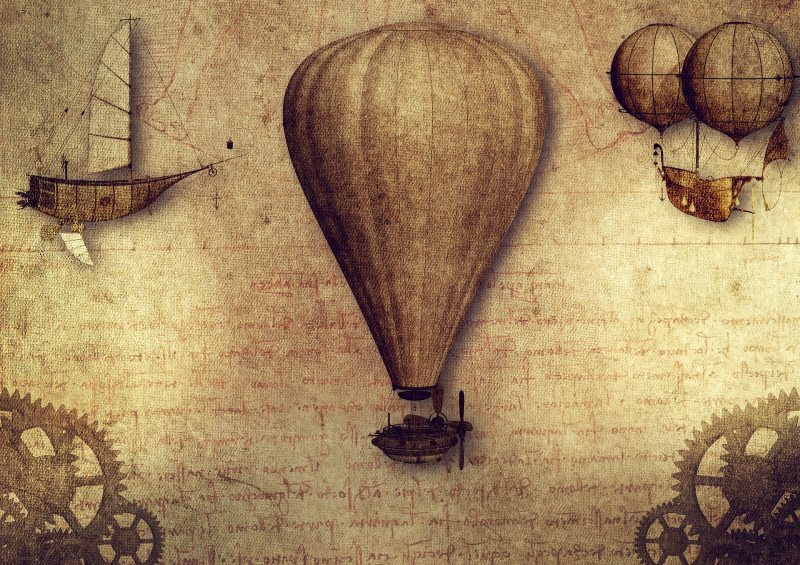
Source: barcoreale.it 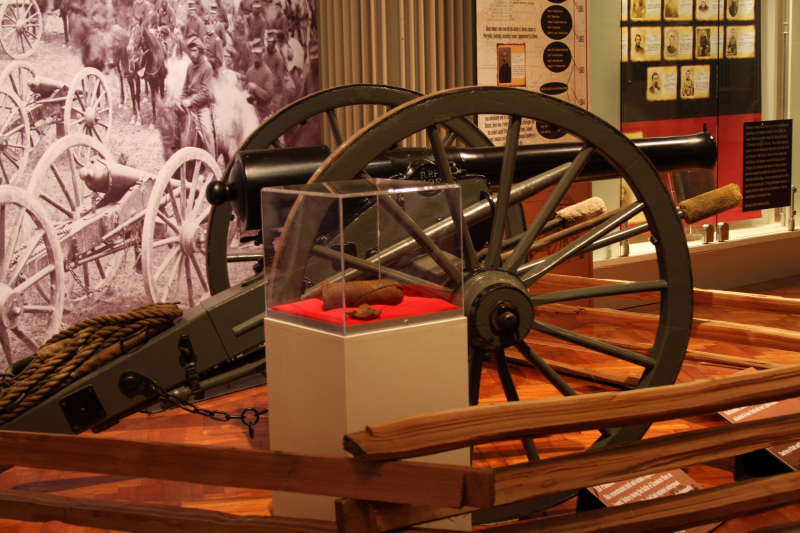
Source: richmountain.org -
Da Vinci built a battle machine in 1487 that is now known as Leonardo's tank or Leonardo's fighting vehicle. The machine, which had 36 weapons jutting out from its sides and a conical cover inspired by a turtle's shell, required eight men to operate. A set of gears would drive the system, which would be powered by cranks that rotated a series of wheels. A military team developed a working machine from Leonardo's tank design by replacing one of the gears, an error allegedly done on purpose to prevent it from being utilized by unauthorized persons, according to a BBC documentary. As a result, Da Vinci conceived the tank 400 years before it was utilized in the First World War.
Da Vinci's drawings, which originate from roughly 1485, vividly demonstrate how his innovations were based on his extensive understanding of nature. The vehicle's conical cover, in the instance of Da Vinci's tank, was clearly inspired by a turtle's shell, an appropriate armor. This outside covering was supposed to be constructed of wood, but it was supposed to be reinforced with metal plates to provide thickness. Those with slanting angles would efficiently deflect enemy fire (an engineering trick rediscovered after World War I). The war machine was built to be pushed straight onto the battlefield, with two massive inner cranks controlled by four powerful soldiers.
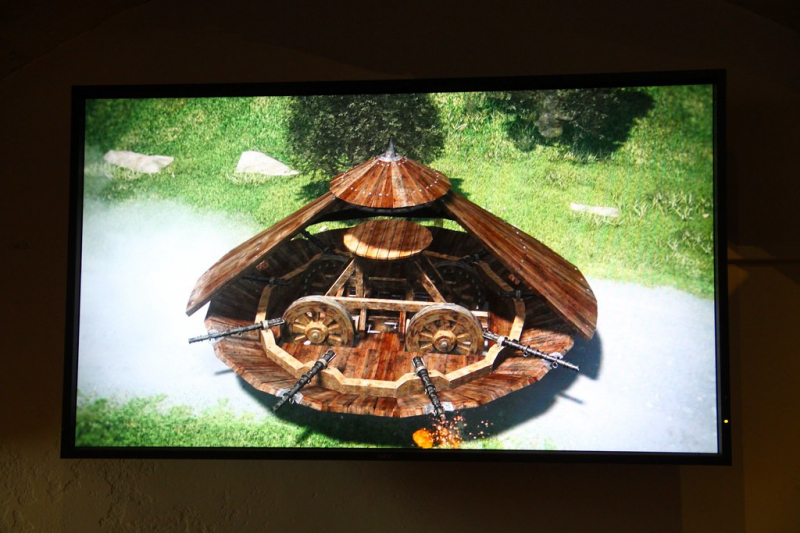
Source: Flickr 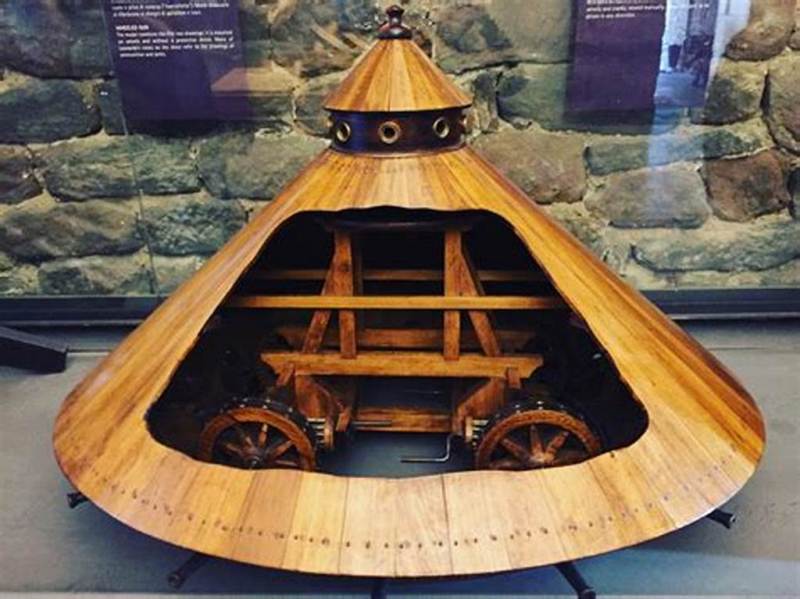
Source: todayinhistory.blog -
Leonardo da Vinci created and maybe built what is now known as Leonardo's robot or Leonardo's mechanical knight around the year 1495. The knight was to be powered by an external mechanical crank and use cables and pulleys to sit, stand, turn its head, cross its arms, and even lift up its metal visor, according to Da Vinci's designs of the major components. Despite the lack of a complete picture of the automation, NASA roboticist Mark Rosheim used Da Vinci's fragmentary notes and sketches to develop a completely functional knight in 2002, implying that Leonardo may have been a robotics pioneer.
Leonardo da Vinci is well-known for his significant anatomical research. He even dissected cadavers and drew detailed inside pictures of them. As a result, he gained a comprehensive knowledge of the human body. He figured out that the muscles were what allowed the bones and joints to move.
He made sure his mechanical knight was anatomically accurate when he designed it. The knight's limbs and joints are proportioned according to the Canon of Proportions, as Leonardo highlighted in the Vitruvian Man. He also attempted to incorporate the way human muscles functioned into the design.
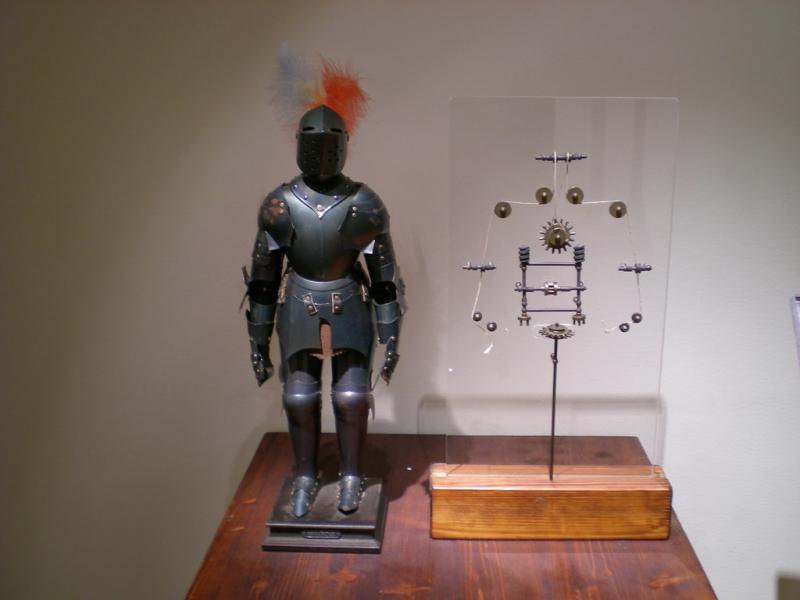
Source: blogspot.com 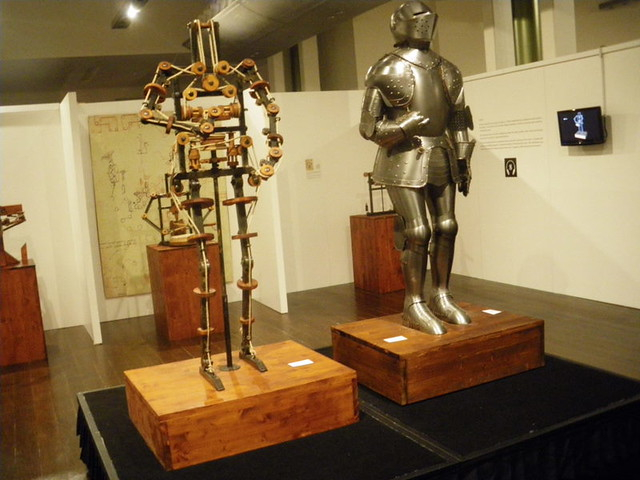
Source: Flickr -
Around the year 1500, while working in Venice, Da Vinci devised a plan to defend the city from invading ships by sending men underwater in diving suits to cut holes in them. As a result, he created the diving suit. Leonardo's diving suit was manufactured for a BBC documentary using pigskin coated with fish oil to resist water, albeit it was never made during his lifetime. The garment was judged to be a functional forerunner to a modern diving suit by the scuba divers who tried it.
With the aid of a diving suit, you may study the lives of marine animals and plants or enjoy the depths after all, seeing how octopuses or colonies of brilliant, cherry Clownfish live at the bottom of the sea is immensely fascinating. However, currently, such technology is employed for more serious objectives, such as deep-sea exploration and numerous scientific studies. For military objectives, Leonardo da Vinci decided to create a comparable suit. People would be able to damage the bottoms of enemy ships with its assistance, allowing them to defend their own ships throughout the battle. Furthermore, this technology may have been effectively used by pearl divers at the time, making their task easier and more efficient.
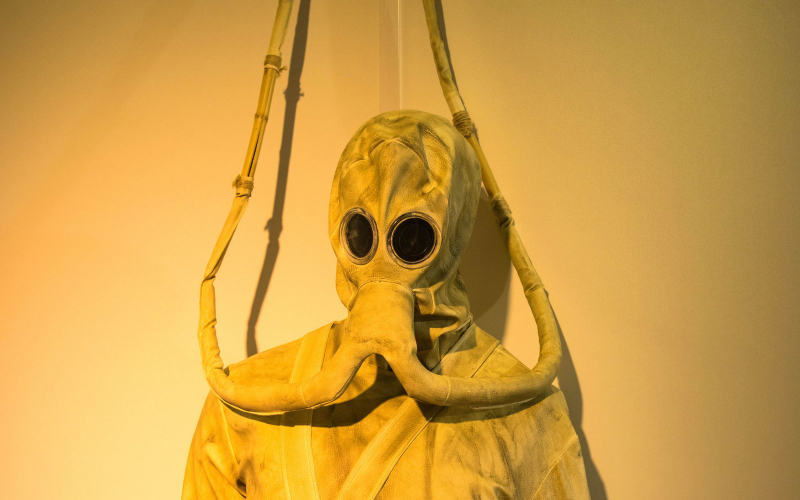
Source: shearwateraviationmuseum.ns.ca 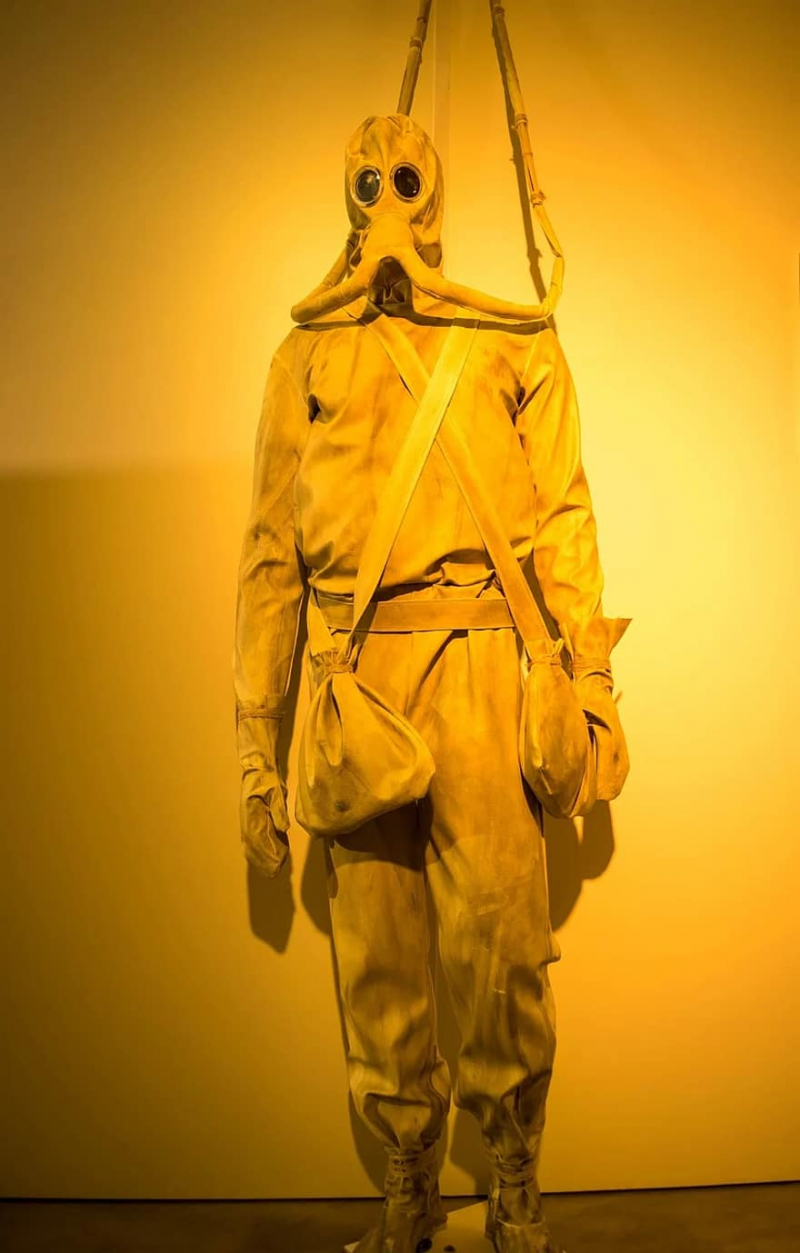
Source: Pinterest -
Leonardo da Vinci was enthralled by the flight of birds and dedicated his life to realizing his dream of inventing the flying machine. He created the concept for the earliest known modern parachute, which was successfully tested in 2000 by Adrian Nicholas of the United Kingdom. Four and a half centuries before it became a reality, Da Vinci envisioned the helicopter, drawing the first known drawing of any helicopter-like machine. In practice, however, his human-powered aerial screw would not have functioned. The glider and landing gear were also designed by Da Vinci.
After a 17-year stay in Milan, Leonardo da Vinci returned to Florence in 1500. His sojourn in the north of Italy was fruitful, yielding not only the magnificent Virgin on the Rocks but also the Last Supper, which his patron, Ludovico Sforza, predicted would be one of history's most magnificent paintings. However, back in Florence, Leonardo pondered whether his best work was still to come. He wrote in a private letter at the end of 1500 that it was now important to focus less on painting and more on building "machines for seeing" in order to "acquire a real and perfect understanding."
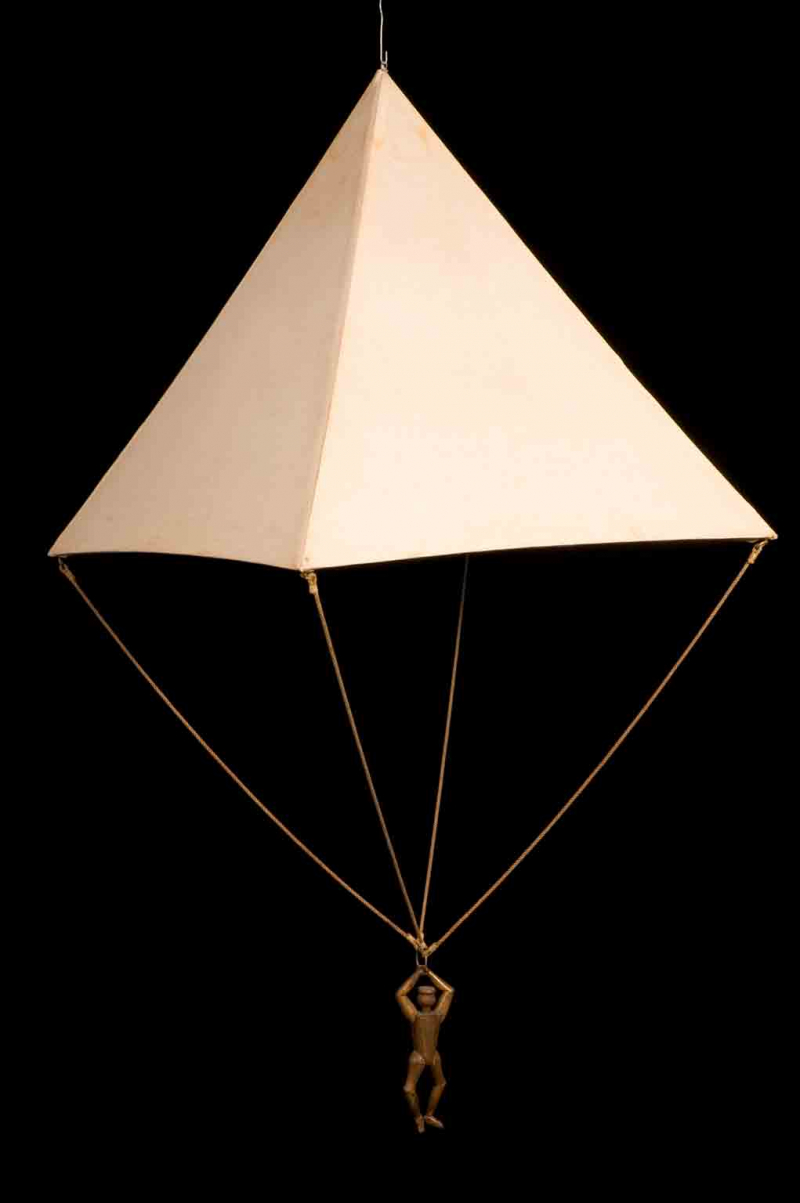
Source: Art Fund 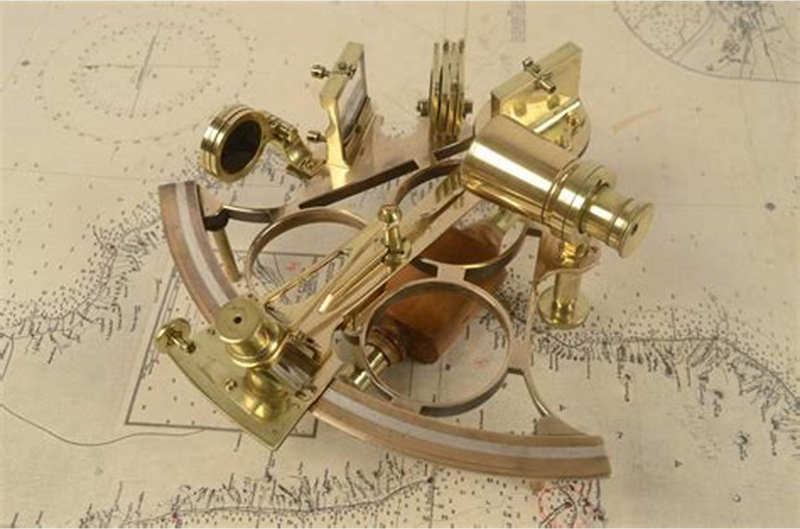
Source: antik.it -
Da Vinci's other scientific and technological accomplishments include designing a self propelled cart, which is considered an ancestor of the modern automobile; inventing the miter lock, which is used on thousands of canals around the world; designing a multi-barrel machine gun; being the first to incorporate ball bearings into an aerospace design; and describing the processes governing friction, which predates the introduction of Amontions' Law.
Even though friction is vital to our survival - without it, we wouldn't be able to walk or even crawl – it was only 50 years ago that a distinct term 'tribology' was developed to characterize its study. Professor Ian Hutchings just published a study on Leonardo da Vinci and his Friction studies.
Leonardo da Vinci is credited with conducting the first systematic research of friction over 500 years ago. That much has long been known, but Professor Hutchings has now located the notes and sketches in which Leonardo initially wrote the principles of friction, demonstrating that he used them to solve diverse mechanical difficulties for more than 20 years.
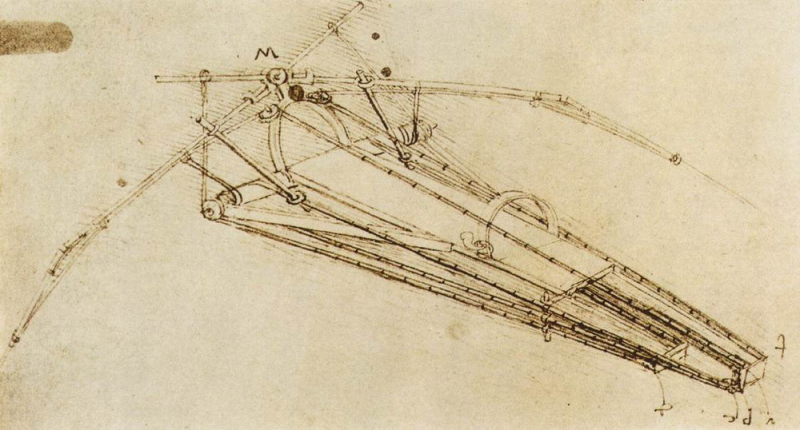
Source: redsvn.net 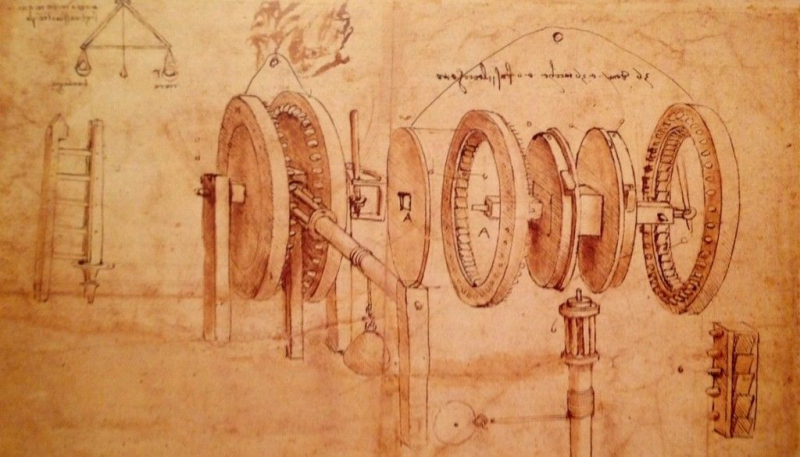
Source: pinterest.com -
Leonardo began his studies in anatomy with Verrocchio, his master, who believed that knowing it was vital to be a competent painter. Da Vinci was later permitted to dissect human bodies as a successful artist. He drew around 200 illustrations for an anatomy text he published. Leonardo's sketches and designs suggest that he studied human anatomy in great depth before the twentieth century. His studies, however, were not published until more than a century after his death, and then only under the title Treatise on Painting.
Da Vinci examined the anatomy of numerous different creatures, including cows, birds, monkeys, and frogs, in addition to human anatomy. Leonardo’s early anatomical studies dealt chiefly with the skeleton and muscles; yet even at the outset, Leonardo combined anatomical with physiological research. From observing the static structure of the body, Leonardo proceeded to study the role of individual parts of the body in mechanical activity. This led him finally to the study of the internal organs; among them he probed most deeply into the brain, heart, and lungs as the “motors” of the senses and of life.
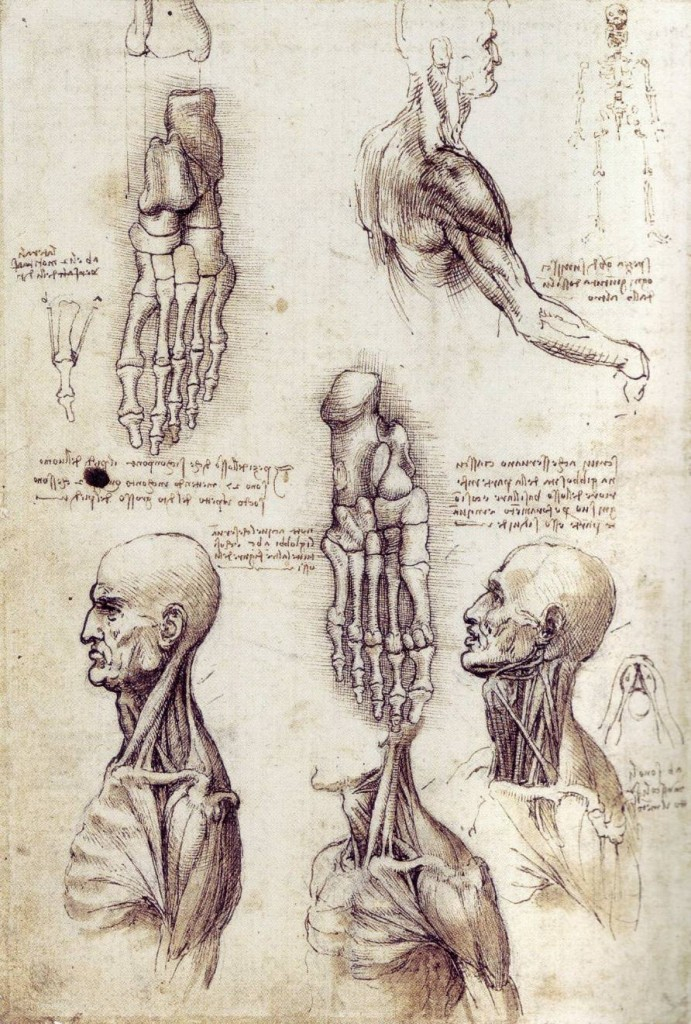
Source: lazerhorse.org 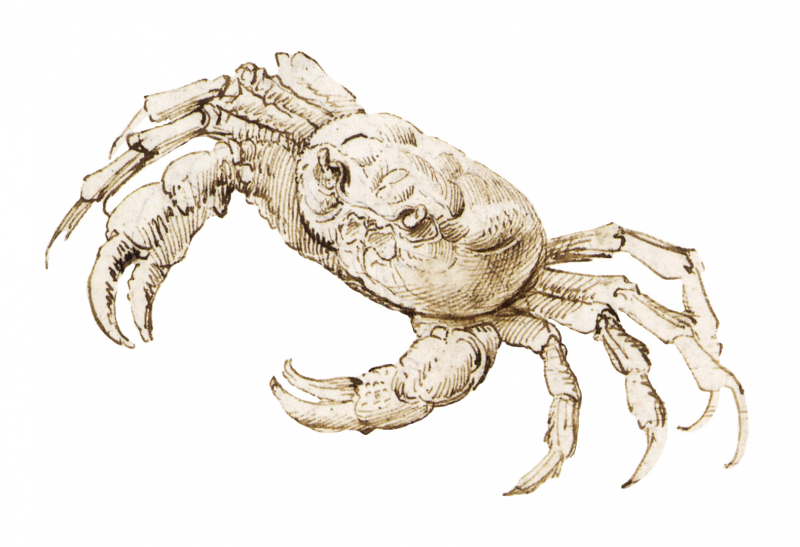
Source: discoveringdavinci.com -
Da Vinci was the first to describe the backbone's double S shape. He dissected and drew the human skull as well as transversal, sagittal, and frontal brain cross-sections. He also investigated internal organs, drawing the human appendix and lungs for the first time, as well as the mesentery, urinary tract, reproductive organs, cervix muscles, and a thorough cross-section of coitus. Da Vinci was one of the first to depict the fetus in the womb in a scientific manner. He also correctly predicted how heart valves regulate blood flow.
Leonardo's early anatomical studies focused mostly on the skeleton and muscles, although he merged anatomical and physiological research from the start. Following his observations of the body's static structure, Leonardo went on to investigate the role of distinct body parts in mechanical activity. This led him to investigate the internal organs, particularly the brain, heart, and lungs, which he saw as the "motors" of the senses and of life.
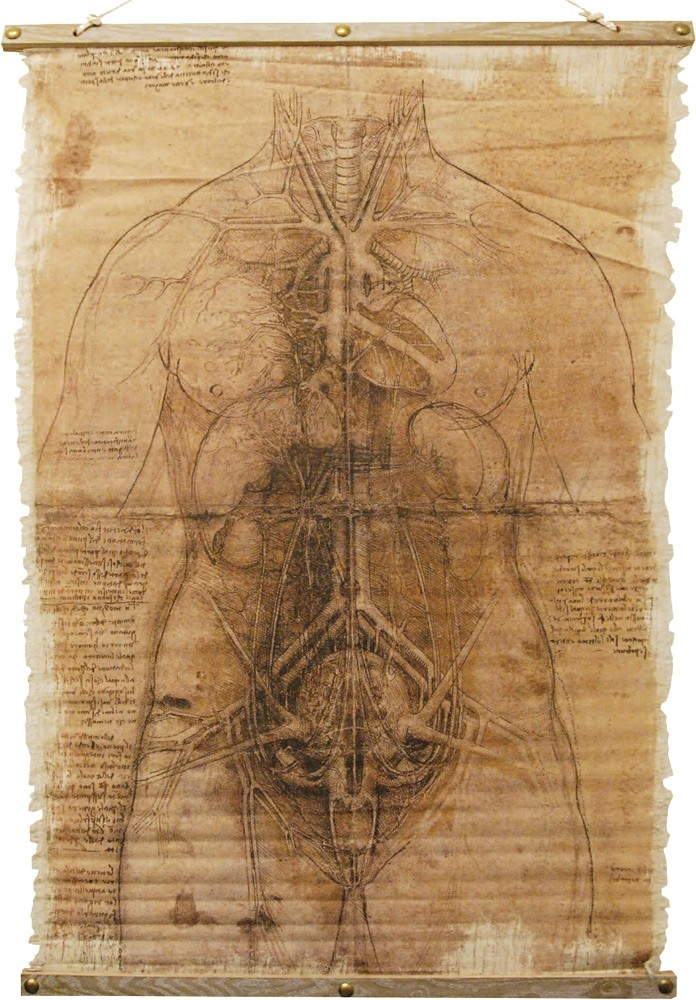
Source: costumes.com.au 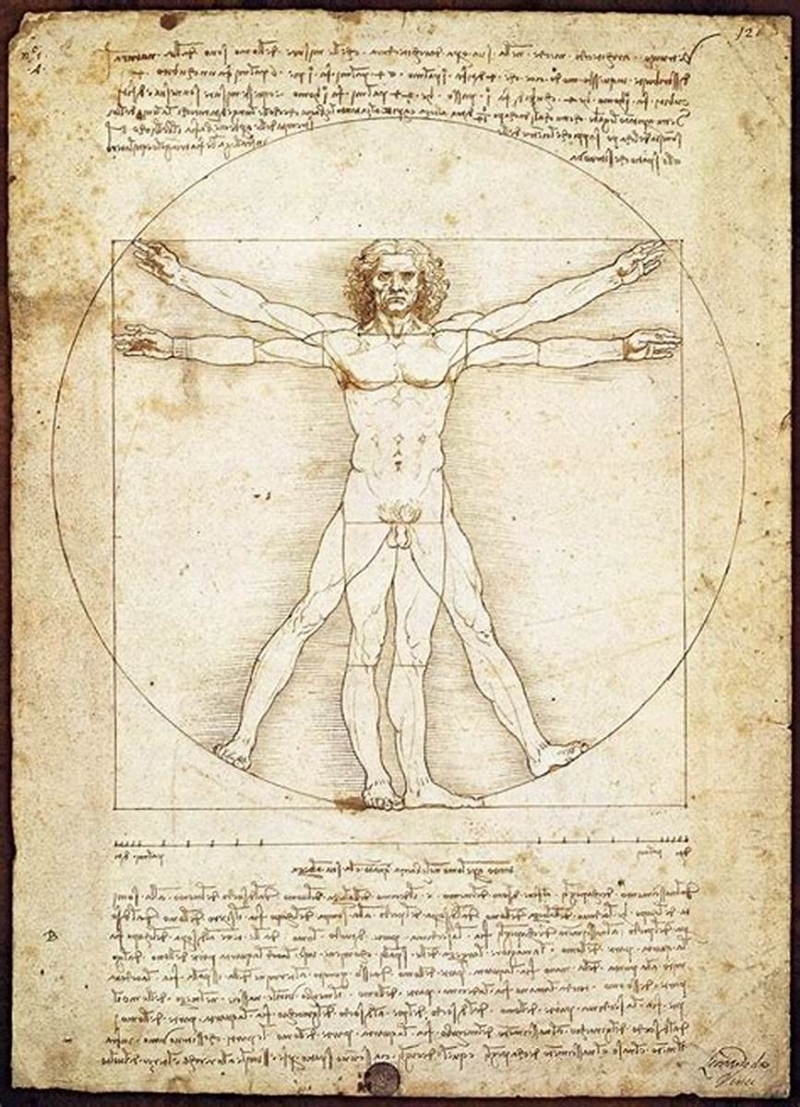
Source: eBay -
Leonardo's groundbreaking scientific and engineering research has only recently been recognized. His reputation had been built on the works he accomplished as a painter throughout the previous four centuries. His detailed knowledge of anatomy, light, botany, and geology; his keen interest in capturing how humans register emotion in expression and gesture; his subtle gradation of tone; and the innovative techniques he used in laying on the paint are just a few of the qualities that distinguish Leonardo's work. Da Vinci was not just one of the most famous painters of his day, but also one of the greatest artists of all time.
Many historians and scholars regard Leonardo da Vinci as the prototypical Universal Genius or Renaissance Man, a person with an insatiable curiosity and a feverishly inventive imagination. According to art historian Helen Gardner, the breadth and depth of his interests were unprecedented in recorded history, and his mind and personality appeared superhuman, while the man himself remained mysterious and distant. While there is much speculation about his life and personality, Marco Rosci points out that his worldview was rational rather than mysterious, and that the empirical methods he used were unconventional for his period.
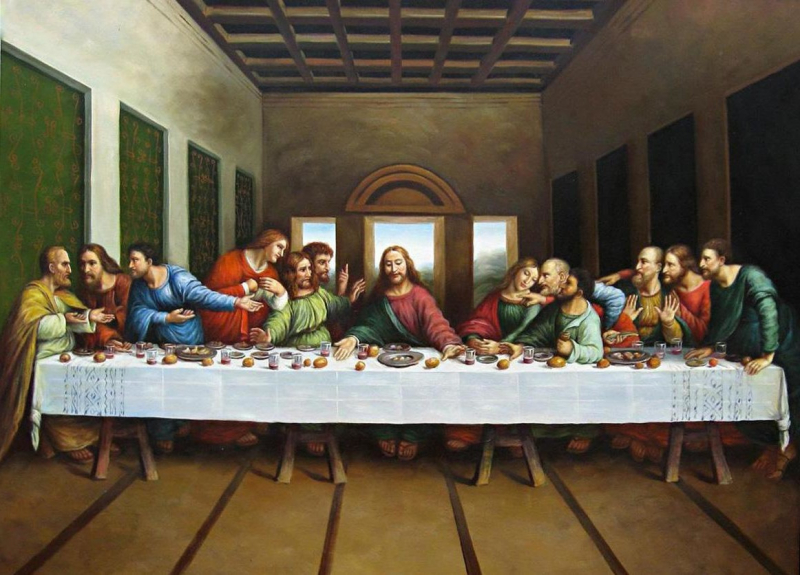
Source: pilgrimwatch.com 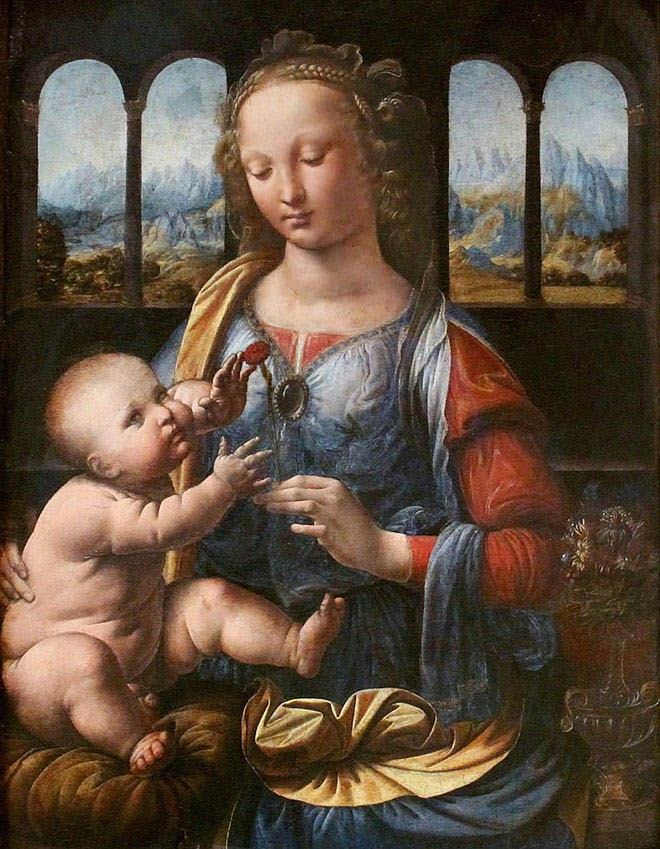
Source: fineartandyou.com -
Da Vinci painted the Mona Lisa between 1503 and 1507, however, he continued to work on it to the end of his life and never delivered it to its commissioner. "The most recognized, most visited, most written about, most sung about, and most parodied work of art in the world," according to the Mona Lisa. It holds the record for the highest insurance value for a painting in history, according to Guinness World Records. It was valued at US$100 million in 1962, which would be roughly US$782 million today after inflation.
The Last Supper, the most reproduced religious picture of all time, and Vitruvian Man, one of the most duplicated creative images, are two other iconic works of art by Da Vinci. The Mona Lisa is the most well-known artwork in the world, and it has always been shrouded in mystery. There are details about the paintings that are unknown, such as the actual identity of the sitter, who commissioned the portrait, and how long Leonardo da Vinci worked on it.
It is also the most studied and well-known painting in the world, with some experts proclaiming it to be the greatest work of all time. It is believed that the picture belonged to Lisa Gherardini, Francesco Del Giocondo's wife and that it was painted between the years 1503 and 1506.
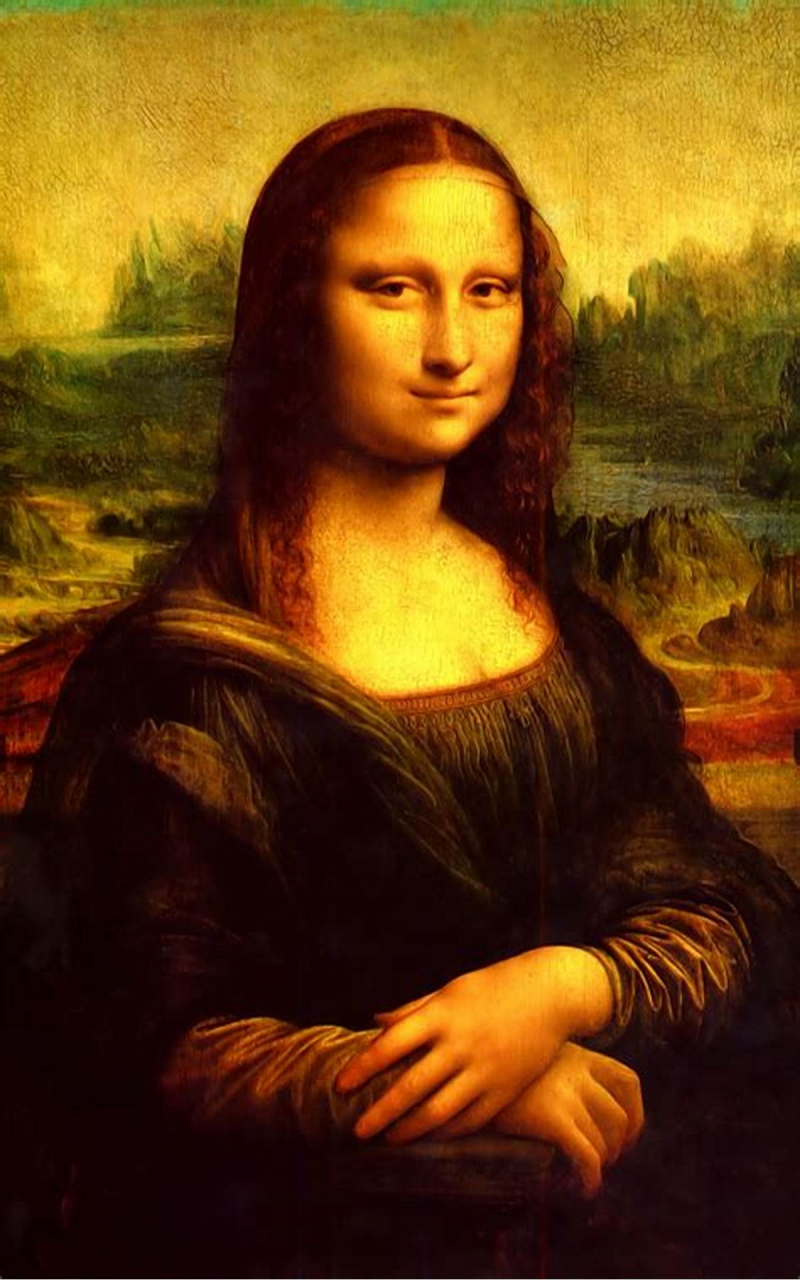
Source: wallpapersafari.com 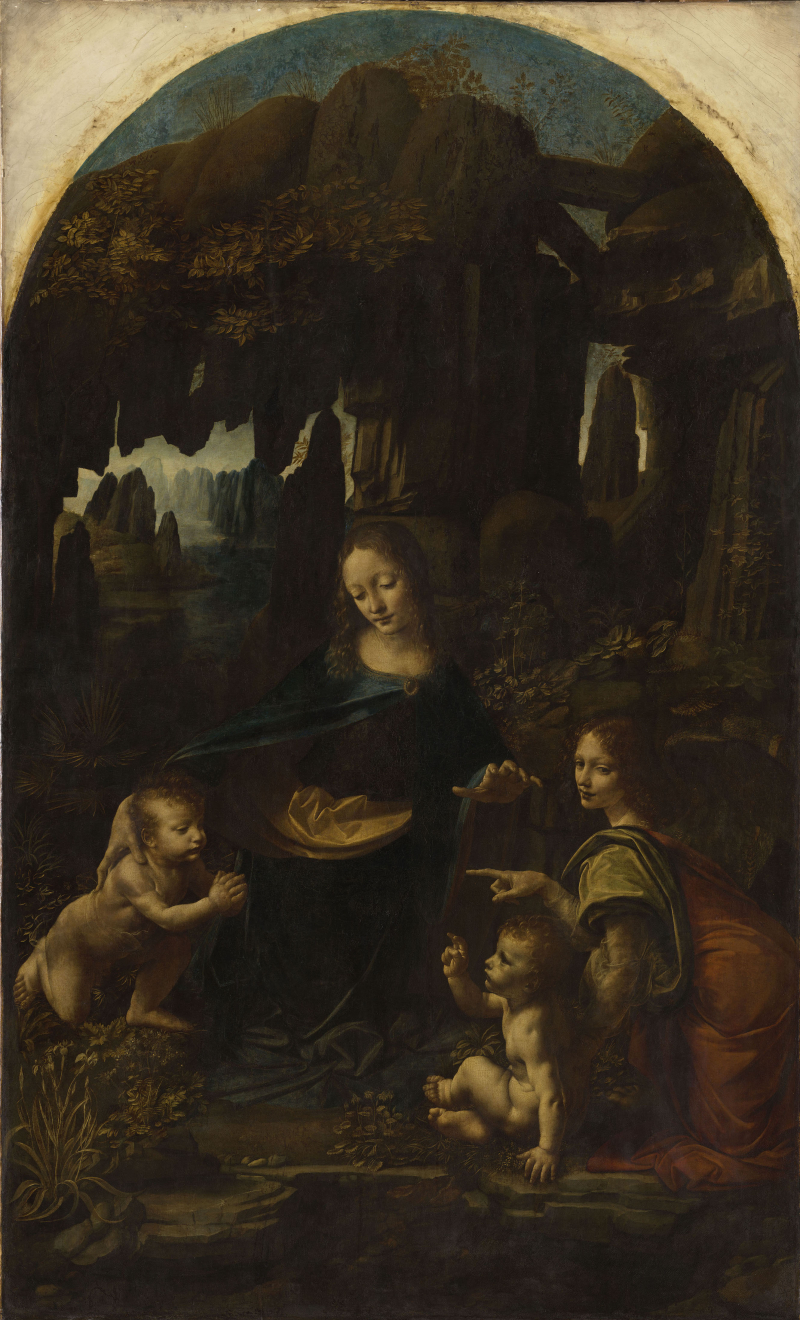
Source: Riverside Theatres Parramatta












